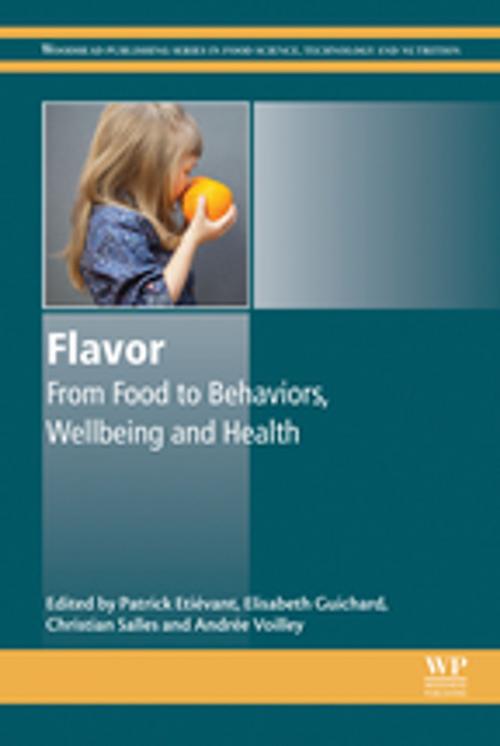Flavor
From Food to Behaviors, Wellbeing and Health
Nonfiction, Science & Nature, Technology, Food Industry & Science| Author: | ISBN: | 9780081003008 | |
| Publisher: | Elsevier Science | Publication: | May 27, 2016 |
| Imprint: | Woodhead Publishing | Language: | English |
| Author: | |
| ISBN: | 9780081003008 |
| Publisher: | Elsevier Science |
| Publication: | May 27, 2016 |
| Imprint: | Woodhead Publishing |
| Language: | English |
Flavor: From Food to Behaviors, Wellbeing and Health is the first single-volume resource focused on the different mechanisms of flavor perception from food ingestion, to sensory image integration and the physiological effects that may explain food behaviors.
The information contained is highly multidisciplinary, starting with chemistry and biochemistry, and then continuing with psychology, neurobiology, and sociology. The book gives coherence between results obtained in these fields to better explain how flavor compounds may modulate food intake and behavior.
When available, physiological mechanisms and mathematical models are explained. Since almost half a billion people suffer from obesity and food related chronic diseases in the world, and since recent research has investigated the possible roles of pleasure linked to the palatability of food and eating pleasure on food intake, food habits, and energy regulation, this book is a timely resource on the topic.
This book links these results in a logical story, starting in the food and the food bolus, and explaining how flavor compounds can reach different receptors, contribute to the emergence of a sensory image, and modulate other systems recognized as controlling food intake and food behavior. The influence of age, physiological disorders, or social environments are included in this approach since these parameters are known to influence the impact of food flavor on human behavior.
- Uniquely brings together multidisciplinary fields to explain, in a narrative structure, how flavor compounds may modulate food intake and behavior
- Includes discussions of chemistry and biochemistry, psychology, neurobiology, and sociology
- Presents an extremely current view that offers a wide perspective on flavor, an area of rapidly expanding knowledge
- Edited by renowned experts in the field of flavor perception
Flavor: From Food to Behaviors, Wellbeing and Health is the first single-volume resource focused on the different mechanisms of flavor perception from food ingestion, to sensory image integration and the physiological effects that may explain food behaviors.
The information contained is highly multidisciplinary, starting with chemistry and biochemistry, and then continuing with psychology, neurobiology, and sociology. The book gives coherence between results obtained in these fields to better explain how flavor compounds may modulate food intake and behavior.
When available, physiological mechanisms and mathematical models are explained. Since almost half a billion people suffer from obesity and food related chronic diseases in the world, and since recent research has investigated the possible roles of pleasure linked to the palatability of food and eating pleasure on food intake, food habits, and energy regulation, this book is a timely resource on the topic.
This book links these results in a logical story, starting in the food and the food bolus, and explaining how flavor compounds can reach different receptors, contribute to the emergence of a sensory image, and modulate other systems recognized as controlling food intake and food behavior. The influence of age, physiological disorders, or social environments are included in this approach since these parameters are known to influence the impact of food flavor on human behavior.
- Uniquely brings together multidisciplinary fields to explain, in a narrative structure, how flavor compounds may modulate food intake and behavior
- Includes discussions of chemistry and biochemistry, psychology, neurobiology, and sociology
- Presents an extremely current view that offers a wide perspective on flavor, an area of rapidly expanding knowledge
- Edited by renowned experts in the field of flavor perception















